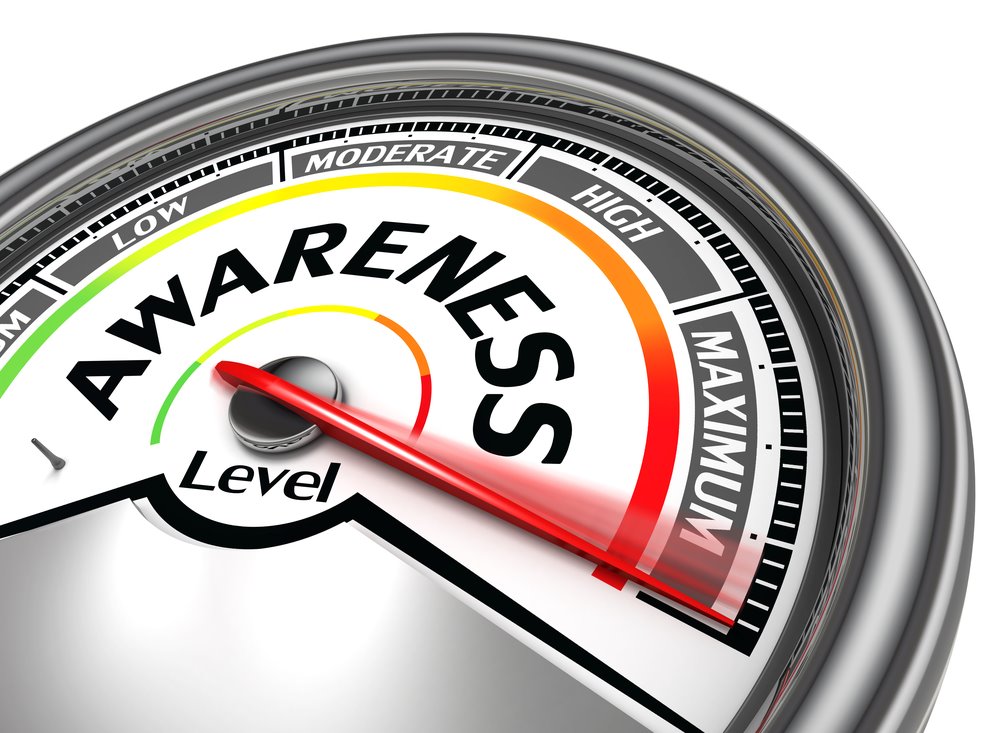 Because of our success building the Barefoot Wine brand, we are often asked how to build a consumer brand. Brand building is a multifaceted and concerted effort to create recognition and demand for a product with your name and logo on the label. You must embark upon a brand strategy that carefully orchestrates your resources, strategic alliances, timing and even your corporate image to achieve that purpose.
Because of our success building the Barefoot Wine brand, we are often asked how to build a consumer brand. Brand building is a multifaceted and concerted effort to create recognition and demand for a product with your name and logo on the label. You must embark upon a brand strategy that carefully orchestrates your resources, strategic alliances, timing and even your corporate image to achieve that purpose.
There is no one thing. It’s not a cute logo or a compelling catchphrase, but a multitude of considerations designed to get your product to the retail shelf and keep it there! This requires a tremendous amount of respect for the harsh realities of the retail environment as well as the distribution system that allows your product to get to market.
Having actually built a successful international brand, after holding on to too many popular misconceptions and having made a ton of mistakes, here are our best take-aways on how to develop successful branding strategies.
The 10 Commandments of Consumer Brand Development
1. Dress for Success (Look Sharp! Stand Out! Make a Statement!)
Let’s assume you have a high-quality product that’s priced right. Too bad! Not enough! Your package not only has to look attractive but it has to distinguish itself from the myriad of other brands vying for your customers’ attention.
Your package is made up of your product’s container, label, name, logo, and a bunch of other legal and contents information that take up a lot of space. Onto that label, which is usually not more than 3” X 3”, you must place a logo that is crisp and clear and which people can recognize from 3 feet away.
We highly recommend that you and your artist spend some significant time in the marketplace to see what packages in your category pop …and which ones flop! See what the logos you can recognize at a distance all have in common. Then go back to the drawing board.
Your goal in package design is distinction, clarity, recollection, and easy recognition. Your package is not sitting on a backlit, flat screen all by itself anymore. Now it’s on a shelf with all your competitors, in a poorly lit environment, where shadows and distance can kill poorly designed brand packages.
Even if you choose to sell your products exclusively online, they should be designed to stand up to the retail environment. You don’t want to wait until you get that big break with the big-box store or national chain to realize that what looks good on a monitor looks terrible on the shelf!
2. Access the Market (Get Your Foot in the Door)
Probably the biggest reason that new brands fail is not knowing how to access the market. This can happen for a number of reasons, but it usually happens because the brand builders believe their products quality, price, logo, and label are so good that people will knock out windows and break down doors just to get to it. They won’t!
The fact is that access to the market is a huge challenge. Sure, you have to have a great product. So who’s going to buy it first and why? Where is the low hanging fruit and the unsatisfied demand? These are the questions brand builders must answer just to get the opportunity to compete in the marketplace.
Needless to say, the retail market is already overcrowded with branded products. Every year, the buyers have to make cuts in every category just to see a return on their investment in expensive shelf space. They can’t afford to carry brands that don’t sell quickly. And they’re not building any more shelf space. So if your product goes in, someone else’s product goes out. It also means, by the way, that if your product doesn’t sell, it too will get axed.
At the startup hubs and business accelerators, they call it “the product-market fit.” It’s not so much what you’re selling as it is whether the market is ready to buy something they may not even know they need. Gaining market access may require substantial “missionary work” on your part. You may even have to alter the look and feel of your package to be acceptable to a pre-existing market.
3. Become a “Hot Mover” (Build a Must-Have Reputation with the Retailers)
Let’s say you’ve done everything right up until now. You have a high-quality product, priced right, your package screams, “Here I am! Buy Me!” and you’ve even gained access to market. You’ve gotten a few brave retailers to take a chance on your brand. Time to celebrate? No! Time to get busy and visit some stores!
Before you were in the store, you could not be discontinued from the store. Now you can, and with dire consequences. If you get discontinued because of poor sales you will never get back in the store. What’s worse is that your competitors, who see you taking precious shelf space potentially away from them, will be quick to tell the other buyers that you are a “slow mover” and “nonstarter!”
This happens to well-meaning brand builders because they think their job is over when their product finally gets on the store shelf. In fact, their job has just begun! And for many, it’s a job they hadn’t signed up for. Now they have to police their shelf position on a regular basis to make sure their brand is in stock, priced right, coded right, and not blocked by a potato chip display! This turns out to be a lot of work for one person with 100 stores. Imagine how much work it is in a big regional chain or box store.
In retail, the first time you’re up at bat you have to knock it out of the ballpark. In other words, you must get the industry reputation of being “hot mover” early and often. This is why we recommend that consumer brand builders start small with a few stores that they can manage. We like to say, “When you start building your brand at retail, don’t sell further away from your house than you can drive and apologize in one day! And get your act together before you take your show on the road!”
4. Respect the True Cost of Sales (Know What it Costs to Service What You Sell)
Many brands with good product-market fit still fail when they try to grow their brand. They simply underestimate the cost of sales in new territories. Not the cost of goods, the cost of sales! Just because you sold it doesn’t mean your distributor has sold it or that your retailer has sold it. It’s a misconception to think that retailers and distributors will build a brand with all the attendant vigilance, merchandising, and focus required to sustain its shelf presence.
We used to lament, “Everybody wants to milk the cow, but nobody wants to raise the calf!” So sure, when you have a big brand fully established with nationwide distribution, every retailer and distributor wants it. But until then you’re going to have to do most of the legwork yourself. This legwork costs money. A big part of your brand building budget will be to pay base salary and expenses for commissioned representatives ultimately in every metropolitan area where your brand is sold.
This is what we call an expanded view of customer service. It’s not just having an 800 number and resolving customer complaints. It’s providing the service your distributors need to build a brand they don’t have time for. And it’s doing the actual merchandising work that’s necessary for the stores to keep your brand on the shelf and in stock.
This is why we recommend that brand builders understand the true cost of sales before they try to expand into new territories. The policies, the laws, the taxes, and the shipping are all different. Use a cost accountant to advise you about any brand strategy for expansion so that you will make the most cost-effective moves as you grow your brand.
5. Sample and Demo (Follow Up or Foul Up)
A big part of your brand building is sampling and demonstrating your product. It’s not enough to just get permission from a retailer to allow you to provide samples of your product or demonstrate its benefits to their customers. The whole purpose of the demo is to create what the industry calls “lift.” When it comes to consumer brand building, it’s done one store at a time. You have to create customers for your products in the neighborhoods near the stores.
Doing an in-store demonstration requires substantial pre-planning. First, you must choose a store that has the customer profile that you are targeting. This means that the prices of the products you are demonstrating must be affordable to those customers. Second, you must secure permission from the store for a day, time and location within the store that maximizes traffic. Third, you must ensure that your representative is presentable, sociable, punctual, and knowledgeable about your products. Fourth, you must make sure there is adequate inventory in the store not only for the sampling but for purchases by the customers.
Then, on the day of the demo, your representative must show up on time with all the marketing materials, supplies, and inventory required. They must engage the customers and have ample inventory at their demo table so that product can go straight to their cart (rather than sending them to a back aisle). They must keep track of the number of customers, the number of conversions, the beginning and closing inventory and a myriad of other data.
Lastly, and most importantly, your representative must get a reorder to cover the increased business the demo, if properly executed, has produced. This last point is where most brand builders fail. They don’t ask for an order that’s larger than normal. So their product sells out more quickly and they still don’t see any lift! You’ve got to get the reorder!
6. Master the Seven Sales (Everybody Wants Something Different)
 We call it the “seven sales” because for us, we had to make seven distinct sales, at seven separate levels in the distribution chain in order to keep our products on the shelf. You can’t build a consumer brand if it isn’t available for sale. And you can’t build a consumer brand if your consumer doesn’t buy it on a regular basis. To accomplish this requires satisfying the various different needs of the various different people in the distribution chain. This is what we did:
We call it the “seven sales” because for us, we had to make seven distinct sales, at seven separate levels in the distribution chain in order to keep our products on the shelf. You can’t build a consumer brand if it isn’t available for sale. And you can’t build a consumer brand if your consumer doesn’t buy it on a regular basis. To accomplish this requires satisfying the various different needs of the various different people in the distribution chain. This is what we did:
- First, we had to sell your own people. They “bought” because they believed we had their best interests at heart. Employees are motivated by income, acknowledgment, free time, and security. They have to believe in your product and your company. They represent you to everyone in your supply and distribution chain, so they must be fully “on board.”
- Second, we had to sell the owners of the distributorships. They bought because we had presold our products to important retailers in their territory. Distribution ownership is interested in the strategic reasons why they should carry your product.
- Third, we had to sell our distributors’ sales managers. They bought because they knew we had our own representative who would make sales in their territory even if their own salespeople did not. Distribution sales managers are interested in making their numbers, or quotas.
- Fourth, we had to sell our distributors’ salespeople. They bought because we offered incentive programs and our own representatives would make sales for them and help them with merchandising and reorders. They were interested in commissions, incentives, and reduced workload.
- Fifth, we had to sell the retail buyers. They bought because we had the reputation of being a hot mover in other retail chains like theirs. They were interested in how fast our product would turn in their stores.
- Sixth, we had to sell the retailers’ clerks. This often overlooked layer in the distribution chain is where the reorders take place, the floor displays are granted, and the recommendation to buy your brand to their customers takes place. These folks are interested in being acknowledged and appreciated for their importance in the distribution and sales process.
- Seventh, we had to sell the retail customers. They only buy products that they consider to be “dependable,” i.e., always in stock. They are interested in quality, price, and dependability.
If there is a break at a weak link anywhere in this chain, your brand building in that store will come to an abrupt halt!
7. Engage Your Community (Customers Also Have a Life)
Your customers are not only customers of the retail stores where they bought your products, but they are also members of several communities. They have social goals beyond their need for consumer goods. One very powerful form of brand building we discovered is Worthy Cause Marketing.
This is an effective way to sample your products while supporting a cause important to your customers, thus giving them a social reason to buy your products. This is much stronger than any mercantile reason.
By supporting nonprofits with goods, services, marketing, and their fundraising efforts, you can build your brand in an already established network of folks who will not only use your products but advocate them to others.
Building your brand through nonprofits gives your corporate image a halo effect which is becoming increasingly important in a marketplace where people know they are voting with their purchases.
8. Honor Your Brand Promise (That’s My Brand)
At first, you spend a lot of time and energy broadcasting your brand promise. You make claims on your package, get endorsements, and see your brand begin to grow. But as it grows, something interesting happens. It’s no longer your brand. It’s no longer your brand promise. They increasingly belong to your customers. It’s their expectation of your brand that keeps them buying your brand.
If you disappoint their expectations, they’ll shop for a new brand. They will even use terms like, “That used to be my brand, but they let me down.”
You are now a brand steward more than a brand owner even though you have legal rights to the brand. Your job is to continue to satisfy the expectations of your customers. They need to depend on the consistency of “their” brand.
If your customers expect a certain type of behavior from you at the corporate level and you disappoint them with production, labor, or environmental practices they don’t expect from “their” brand’s producer, you can damage your brand image, corporate image, and ultimately your sales.
9. Be True to Your Message (Consistency in Quality, Packaging, and Style)
You don’t have the luxury of changing your style. It’s hard enough to get your customers attention in the crowded, competitive retail space. The best you can do is to provide a consistent product, a consistent message, and a consistent style. Your customers’ attention spanned just isn’t broad enough to accept changes.
Everything you say or do to promote your brand must be done in a way familiar to your customer. Don’t go changing fonts, colors, or logos. It takes a long time for your customer to get used to your brand, where to find it, what it looks like, and what it delivers. Don’t confuse them!
We’ve seen many brands go through too many changes and lose their followings. This is usually because the brand builders don’t see traction fast enough and believe there’s something wrong with the package. What’s wrong may be the merchandising, the pricing, or the distribution management. But it’s easier to design a new logo than to get out there and actually do the work that is necessary to build your brand.
10. Stay Relevant (Complaint Resolution or Customer Intel)
“The best-laid plans…” and the best brand building strategies often go awry. It’s not so much that you missed the market as it is that the market moved on without you. From our experience, the market is an ever-changing dynamic that brand builders must stay on top of.
One way to keep your brand products relevant is to change the way you view your customer service people. Instead of viewing them as “complaint resolution,” view them as “customer Intel.” They speak to your customers every day. Customers who call in with complaints have already committed to your brand. This is your chance to find out what they think of your products and services, where they shop, and what improvements they would like to see.
The other folks who speak to your customers every day are your salespeople. They know what’s going on in the shifting market landscape. They know what your competition is up to. And they know where your brand is gaining and losing traction.
Make sure there is a direct line of communication between Sales and Customer Service on the one hand and Marketing and Production on the other. No brand building strategy can work without constant, real-time, feedback from your customers.
Conclusion:
So, as you can see from our real-world experience, brand development is more than a great product and clever marketing plan. That’s certainly required, but not enough to build a national retail brand. To achieve that goal, get ready to do a lot of hard work in the trenches and a lot of thoughtful strategies executed in a limited physical environment.
Before we learned all this the hard way, we just said, “How hard could it be? And how long could take?” Now we know…


